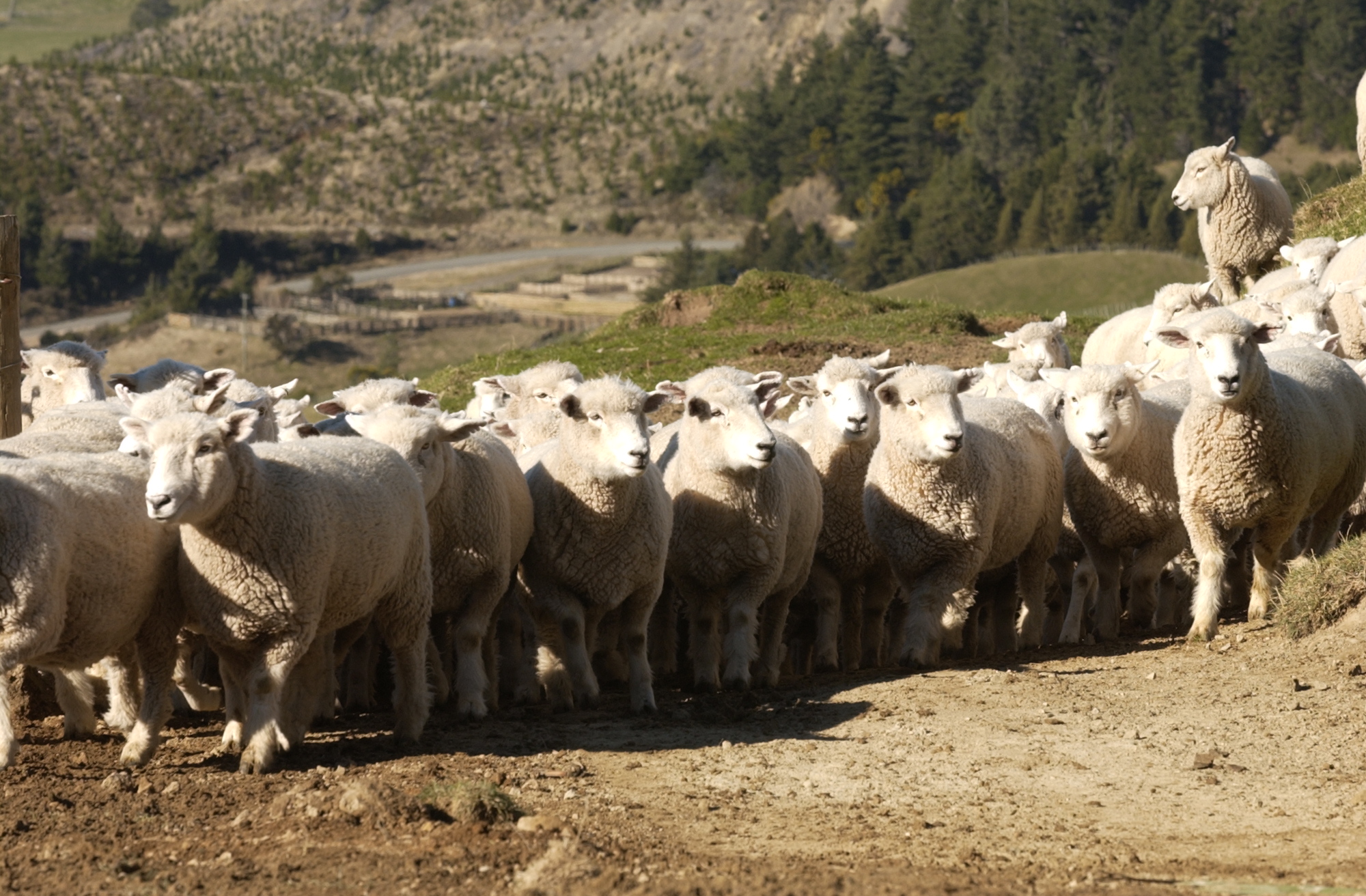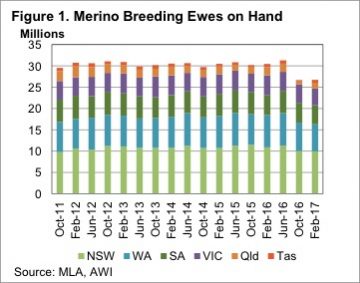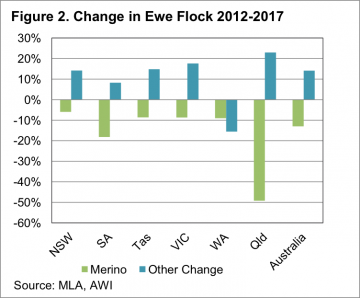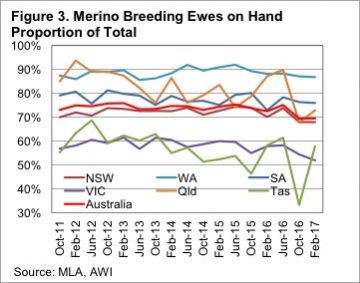Where are all these Merinos?

Recently we published an article reviewing the trends in ewe numbers and breeds. An interesting stat in the article was that Merinos still make up 69% of the national ewe flock. A common question after the article was ‘where are all these Merinos? We delve deeper into the data to find out.
 Living in Western Victoria, which is one of the hotspots for the swing to meat breeds, it’s hard to imagine that 69% of the ewe flock is made up of Merinos. Figure 1 in part explains this, with 61% of the nation’s Merinos being in NSW and WA. Just 15% of Australia’s Merino Ewes are now in Victoria.
Living in Western Victoria, which is one of the hotspots for the swing to meat breeds, it’s hard to imagine that 69% of the ewe flock is made up of Merinos. Figure 1 in part explains this, with 61% of the nation’s Merinos being in NSW and WA. Just 15% of Australia’s Merino Ewes are now in Victoria.
The numbers of Merino ewes in NSW has remained relatively steady since the start of 2012, falling 6% compared to the national fall of 13% (figure 2). The big movers have been South Australia, where Merino numbers have fallen 18% in five years, and Queensland, which has lost 49%, just under 1 million head to 1.35 million head.
 Figure 2 also shows every state except WA has increased their number of ‘other’ breeds since 2012. On a national scale, the decline in Merinos hasn’t been matched by increases in other ewes. However, in NSW and Victoria Merinos have been displaced by other ewes. In WA, SA and Queensland total sheep numbers have fallen.
Figure 2 also shows every state except WA has increased their number of ‘other’ breeds since 2012. On a national scale, the decline in Merinos hasn’t been matched by increases in other ewes. However, in NSW and Victoria Merinos have been displaced by other ewes. In WA, SA and Queensland total sheep numbers have fallen.
Figure 3 shows how the proportion of Merino ewes has changed in each state over the past five years. Victoria has had the lowest proportion of Merino ewes, apart from Tasmania, for the past five years, with much of the decline happening in the last two years. With just 52% of sheep in Victoria being Merinos, having fallen from 60% two years ago, it’s little wonder those in the south are wondering where the Merinos are.
 Perhaps it is due to climatic conditions, or it might be due to the fact that Merino’s are bigger and more suited to lamb production in WA, but the West remains a stronghold of the Merino. The proportion of Merino’s in the west hasn’t really changed over the last five years, fluctuating between 86 and 92% and currently sitting at 87%.
Perhaps it is due to climatic conditions, or it might be due to the fact that Merino’s are bigger and more suited to lamb production in WA, but the West remains a stronghold of the Merino. The proportion of Merino’s in the west hasn’t really changed over the last five years, fluctuating between 86 and 92% and currently sitting at 87%.
Key points:
- Most of Australia’s Merino ewes are currently in NSW and WA, although numbers have declined in all states.
- Other breed have replaced Merinos in NSW and Victoria, but total ewe numbers are down in WA and SA.
- The decline in Merino’s is in part being borne out in higher wool and merino sheep prices.
What does this mean?
Where are all the Merinos? In NSW and WA, and to a lesser extent SA. There remain some in Victoria but the trend towards meat breeds continues, albeit at a slower pace than anecdotal evidence would suggest. Lower merino ewe numbers are obviously contributing to current strong wool prices, along with merino lambs and sheep, which are currently sought after, and priced well relative prime lambs.


